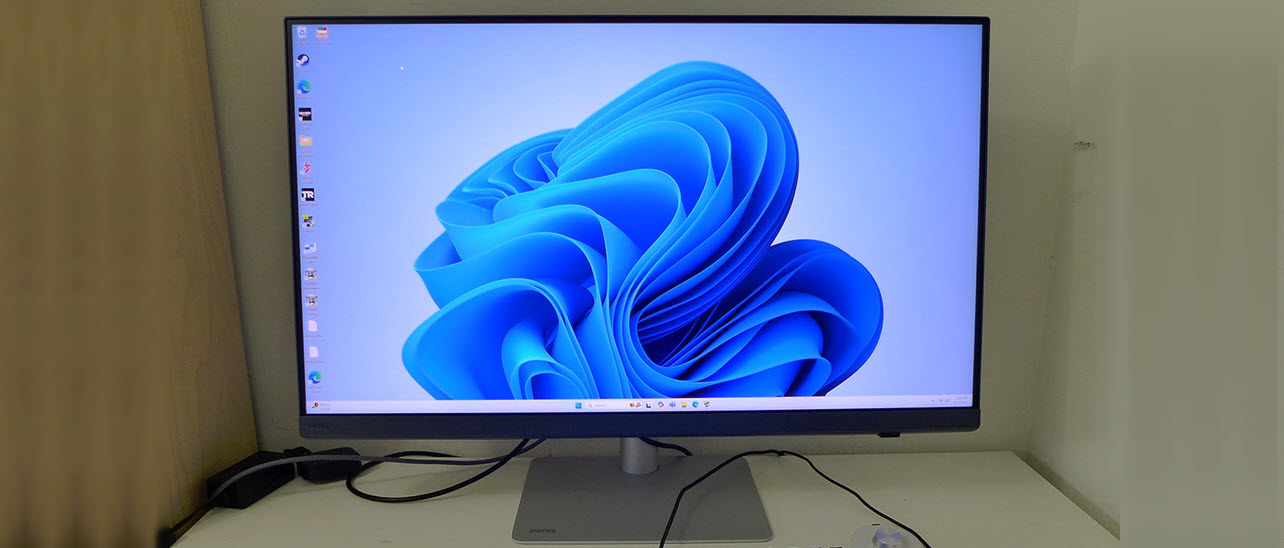Why you can trust Tom's Hardware
I departed a bit from the norm when testing the PD3226G because of the uniformity compensation. It’s locked on in the fixed color modes, so contrast is effectively halved as is peak brightness. The workaround is to select the User modes which require a few tweaks to achieve the optimal image.
Grayscale and Gamma Tracking
Our grayscale and gamma tests use Calman calibration software from Portrait Displays. We describe our grayscale and gamma tests in detail here.
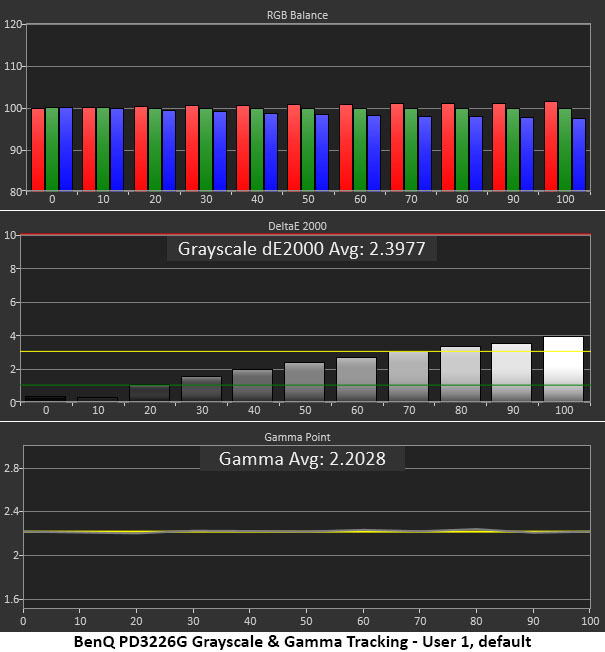


With no settings changes, the User 1 mode tracks 6500K pretty well. There are slight red errors from 80-100% brightness, but these will be hard to see in content. Red is the most forgivable issue because it’s far less visible than green or blue to the naked eye. The gamma trace is a benchmark for others to follow. It means that every luminance level is rendered exactly to the values in the source signal. It ensures maximum depth and texture to the picture.
Switching to sRGB introduces some green errors, but they can be calibrated away with a few adjustments to the RGB sliders in the user color temperature option. Gamma remains perfect.
Comparisons
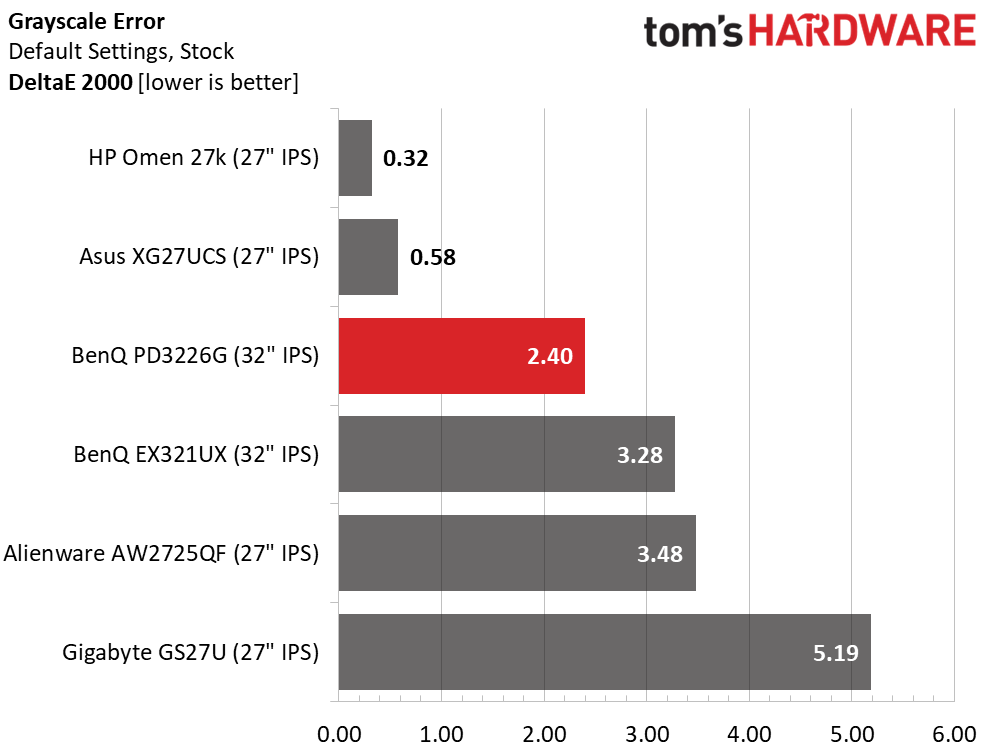
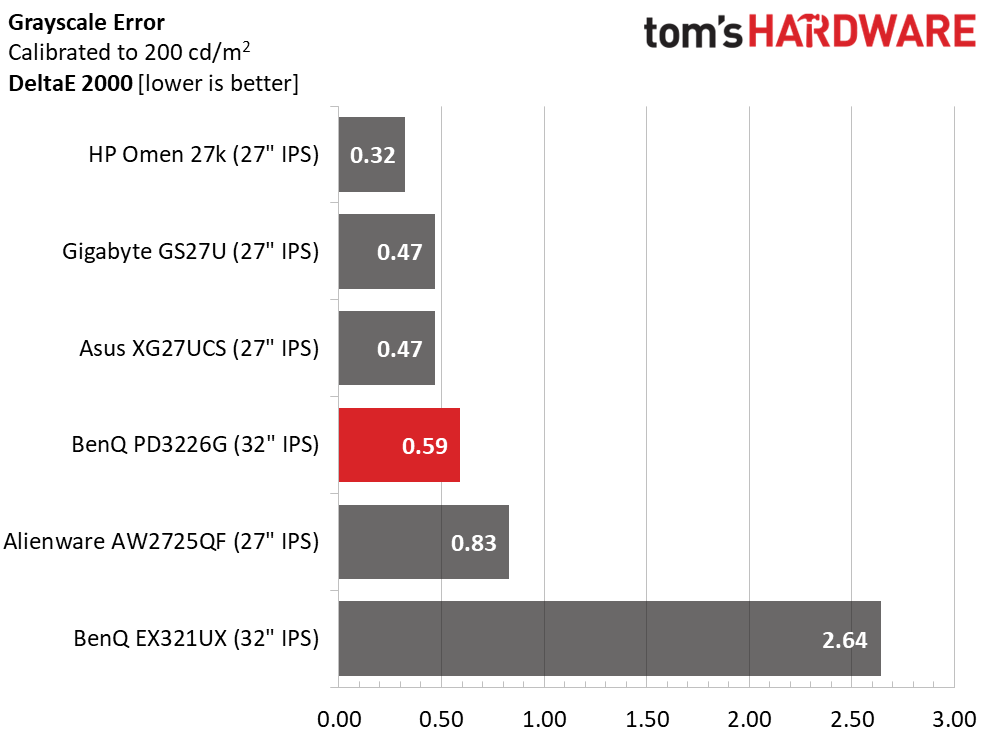

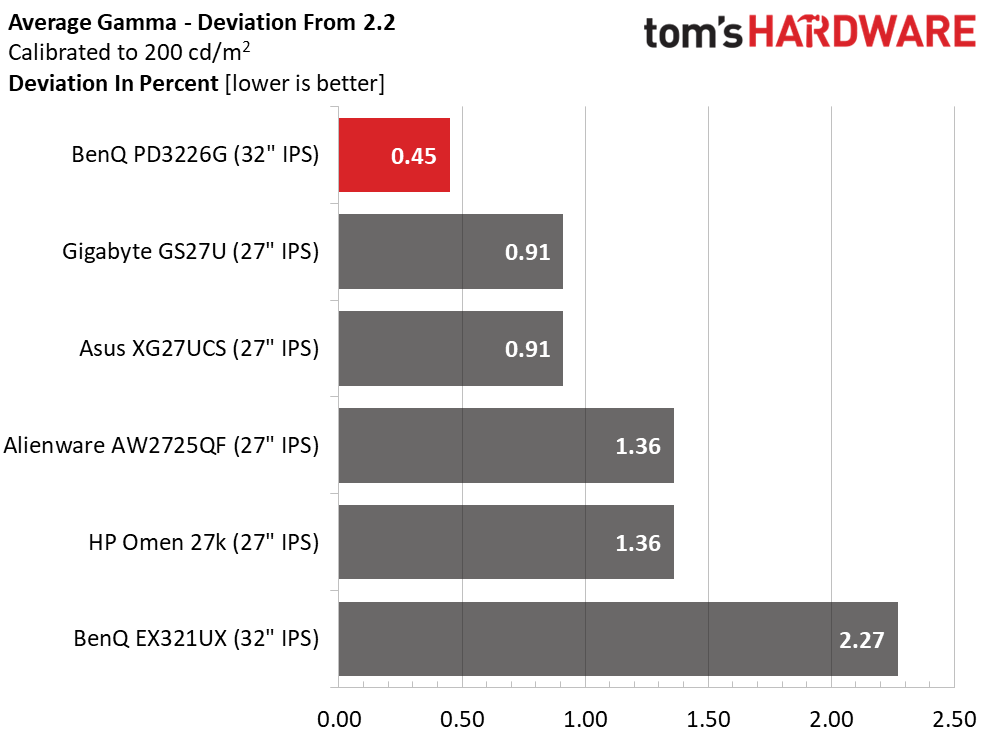
When stacking the PD3226G up against other gaming monitors, it does well in the out-of-box test and is only bested by the HP and Asus screens. It can be used without calibration, but since its purpose is precision, it’s better to make the adjustments. Once complete, it fits in with the others at 0.59dE, an excellent score.
The PD3226G’s gamma tracking is some of the best I’ve seen to date. It has a miniscule 0.04 range of values and deviates from 2.2 by 0.45%, the actual value is 2.19. It doesn’t get better than that.
Color Gamut Accuracy
Our color gamut and volume testing use Portrait Displays’ Calman software. For details on our color gamut testing and volume calculations, click here.
Get Tom's Hardware's best news and in-depth reviews, straight to your inbox.

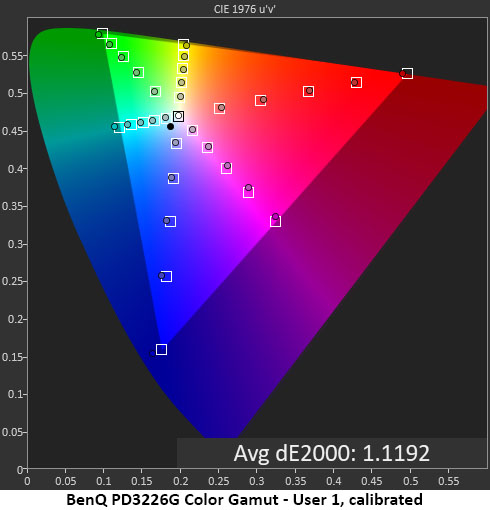
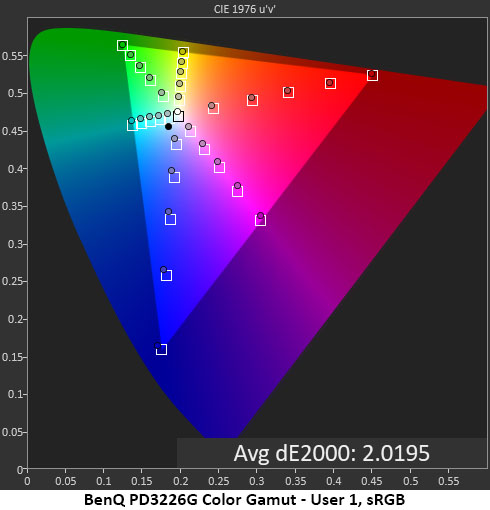
The PD3226G’s default color error is below the threshold of visibility, but there is a little room for improvement. Secondary colors are slightly off hue, but this will be fixed with grayscale calibration as the second chart shows. The gamut is fully covered on all sides, which is a very good thing.
In the sRGB test, no grayscale calibration has been performed, but the PD3226G manages a low 2.02dE error anyway. Alternatively, you can use the fixed color modes, which are roughly equal in accuracy to the third chart above, with errors around 2dE.
Comparisons
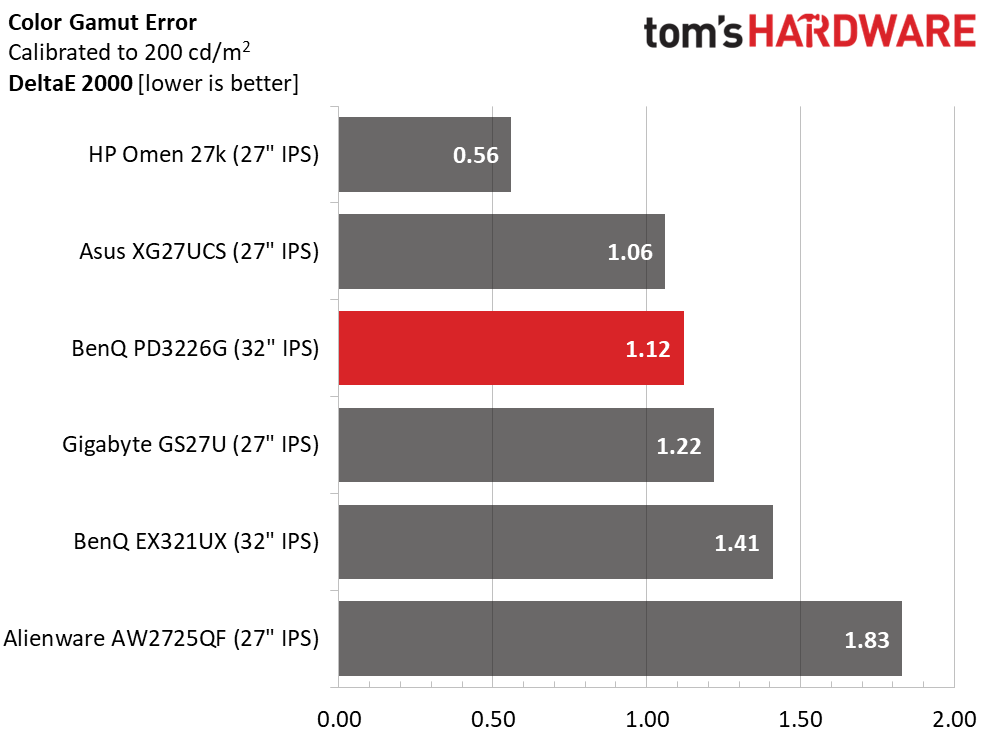

The PD3226G’s 1.12dE error is about as good as it gets. A few monitors like the HP Omen 27k make it below 1dE but when viewing all six screens here, they will appear identical. The PD3226G is a pro-grade display with color accuracy to match.
Color volume is excellent with 102.44% coverage of DCI-P3 and 101.46% of sRGB. These are ideal numbers being neither too high nor too low. Balance like this ensures an optimal image and no compromises when color grading or mastering content. Whether you’re gaming or editing video, the PD3226G handles it with precision.
Test Takeaway: The PD3226G is a professional monitor in every way. My only complaint is that the fixed color modes force the user into uniformity compensation which cuts contrast and peak brightness. There is no lack of capability here, just a lack of choice. But it is very accurate and very colorful.
MORE: Best Gaming Monitors
MORE: How We Test PC Monitors
MORE: How to Buy a PC Monitor
Current page: Grayscale, Gamma and Color
Prev Page Brightness and Contrast Next Page HDR Performance
Christian Eberle is a Contributing Editor for Tom's Hardware US. He's a veteran reviewer of A/V equipment, specializing in monitors. Christian began his obsession with tech when he built his first PC in 1991, a 286 running DOS 3.0 at a blazing 12MHz. In 2006, he undertook training from the Imaging Science Foundation in video calibration and testing and thus started a passion for precise imaging that persists to this day. He is also a professional musician with a degree from the New England Conservatory as a classical bassoonist which he used to good effect as a performer with the West Point Army Band from 1987 to 2013. He enjoys watching movies and listening to high-end audio in his custom-built home theater and can be seen riding trails near his home on a race-ready ICE VTX recumbent trike. Christian enjoys the endless summer in Florida where he lives with his wife and Chihuahua and plays with orchestras around the state.
